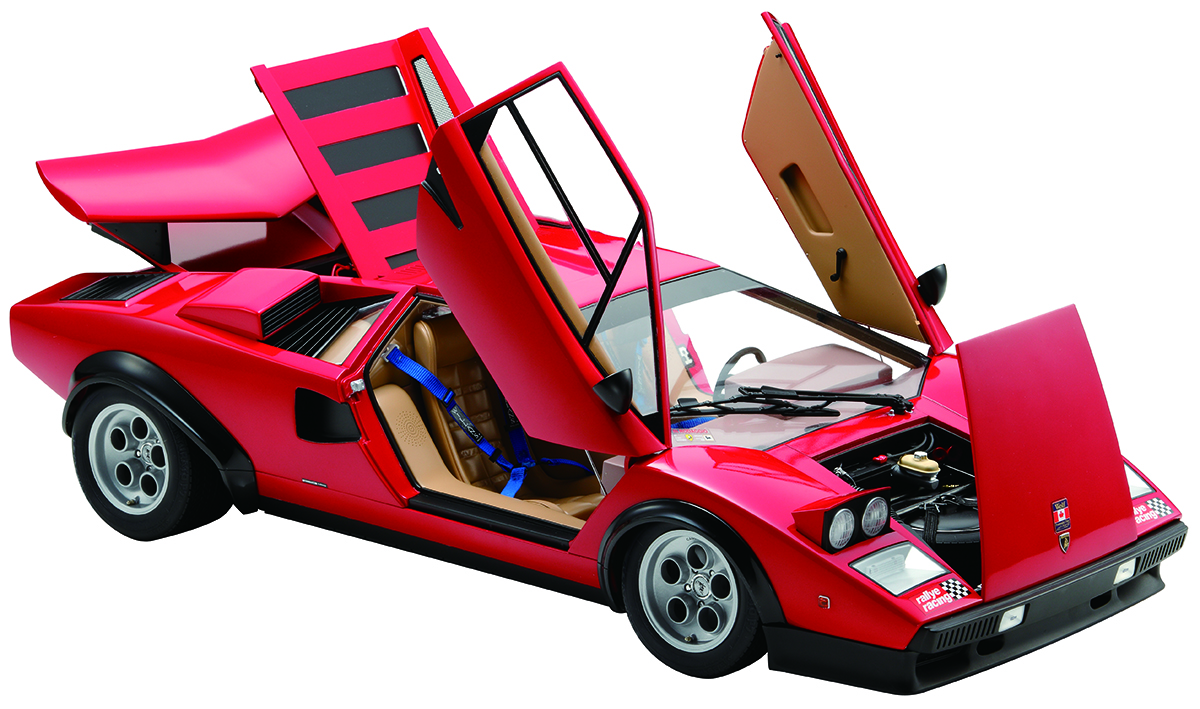Lamborghini Countach – History of a Supercar Icon
Widely regarded as one of the most iconic supercars ever made, the Lamborghini Countach was an instant hit from the moment it first appeared at the Geneva Motor Show in 1971. Over the next two decades it became the firm favourite poster car for many boys and men – here we explore how it came to be, and just what makes this supercar so special.
Public and critical reception of the prototype was unanimous
The Name of Wonderment
Pronounced COON-tahsh – Piedmontese for “amazed” or “wonder”, rumour has it that the Countach received its name from Lamborghini designer and constructor Nuccio Bertone, who caught a glimpse of the “Project 112” prototype prior to its unveiling at the 1971 Geneva Motor Show in Switzerland.
Public and critical reception of the prototype was unanimous – this mid-engined, two-seater coupe was an instant hit with its futuristic styling and serious horsepower – forever justifying its awe-inspired name.
Unique, Innovative Style
Designed by Marcello Gandini to be the predecessor to the smooth and cool 1967-72 Lamborghini Miura, the Countach resembled something drawn by an architect with a straight rule – its angular, low and wide body giving it a sharper appearance than anything ever seen before in the world of exotic cars.
Its scissor doors became a Countach trademark, and were borne of practical means rather than another of the designers whims – the chassis’ tubular frame produced high and wide sills, meaning that conventional doors would be impossible to use in any tight parking situation or other mildly confined spaces.
While the prototype Countach’s style certainly turned heads, several modifications and enhancements were made prior to the production model’s release at the 1973 Geneva Motor Show, with the LP400 finally going on sale in 1974.
Powerful Engine
Initial plans for the Lamborghini Countach involved a 5-litre V12 engine, the first cars off the production line were fitted with the Miura’s 4-litre, 353bhp engine, however this was mounted longitudinally in the mid-engine configuration as opposed to the central mounting of the Miura (LP = Longitudinale Posteriore, hence the name). Coupled with its dynamic wedge shape, the Countach was able to achieve a maximum speed pushing 200mph.
Engine modifications continued through the subsequent years, resulting in the 5-litre engine seen in the Lamborghini Countach LP500S.
Prototypes for Progress
While the Lamborghini Countach became a firm favourite after its production release in 1974, there was always room for improvement in the quest for perfection. Below is a list of the models released by Lamborghini:
• LP400 – the original production model
• LP400S – released in 1972 and similar to the original, but with 375bhp, fibreglass wheel arch extensions, and wider Pirelli P7 tyres which greatly improved handling and stability
• LP500 Prototype – an experimental concept car shown at the 1971 Motor Show – the 500 representing its intended 5-litre engine
• LP500S – released in 1982 and almost identical to the LP400S, but with the larger 5-litre engine providing increased power
• 5000QV – released in 1985 and quite similar to the LP500S, but with an improved 5.2-litre engine which caused a shift of the carburettors to the top of the engine to enhance breathability
Though it may never be recognised as the most beautiful or most powerful supercar ever made, there’s no denying that the Lamborghini Countach is something special, and its emergence changed the landscape of exotic cars forevermore.
If you’d like to build your own 1:8 scale model replica of the Lamborghini Countach LP500S, click here, and make sure you follow our helpful build diary.
Sources:
http://www.danjedlicka.com/classic_cars/countach.html
http://dailynewsdig.com/lamborghini-countach-history/
http://www.lamborghini.com/en/masterpieces/countach/







